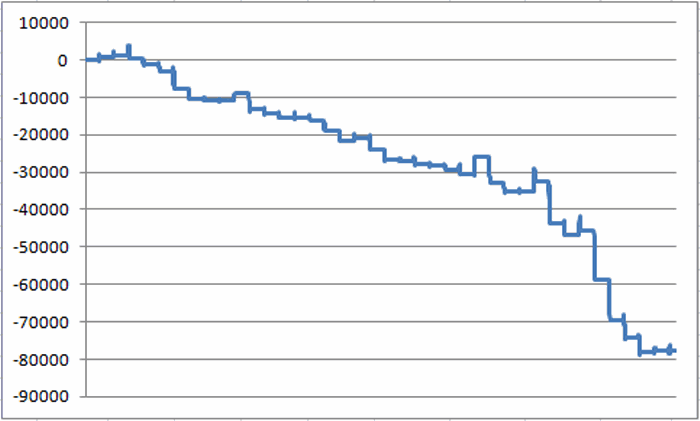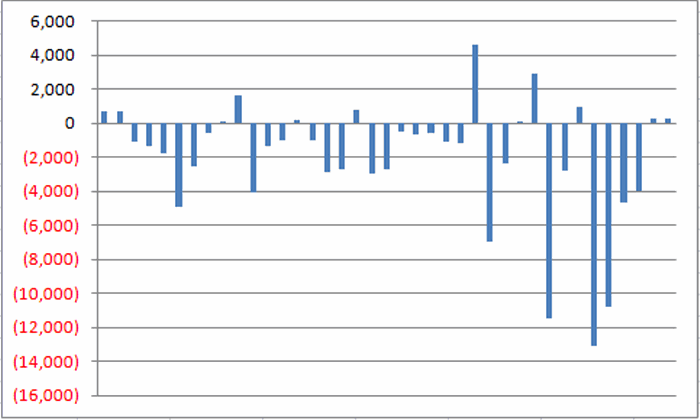One advantage of considering seasonal trends is that sometimes it is not about “what to do” but rather “what NOT to do”.
Many traders – myself included – will look at the chart of November soybeans in Figure 1 and instinctively see some sort of a bottom forming.  Figure 1 – A Potential Support Area in Soybeans (Courtesy ProfitSource by HUBB)
Figure 1 – A Potential Support Area in Soybeans (Courtesy ProfitSource by HUBB)
The two horizontal lines drawn in Figure 1 seem to suggest a strong area of support, which might compel a trader to consider a long position in the soybean market. And in fact that may work out just fine. But I for one am standing aside for awhile.
Why? I thought you’d never ask.
Seasonally Unfavorable Fall Period for Soybeans
The period we will consider extends from the close of the 3rd trading day of September through the close of the 2nd trading day of October each year. Figure 2 displays the “growth” of equity achieved by buying and holding one soybean futures contract during this period every year since 1978. Figure 2 – Cumulative results: Long 1 soybeans futures contract Sep TDM 3 through October TDM 2 (1978-2106)
Figure 2 – Cumulative results: Long 1 soybeans futures contract Sep TDM 3 through October TDM 2 (1978-2106)
As you can see, it is not a pretty picture.
Figure 3 displays the year-by-year profit/loss for this unfavorable period. Figure 3 – Year-by-Year Results Long 1 soybeans futures contract Sep TDM 3 through October TDM 2 (1978-2106)
Figure 3 – Year-by-Year Results Long 1 soybeans futures contract Sep TDM 3 through October TDM 2 (1978-2106)
For the record, soybeans:
*Showed a gain 12 times (31% of the time)
*Showed a gain 27 times (69% of the time)
*Average gain was +$1,105
*Average loss was -$3,366
Summary
The bottom line: When beans are good during early September to early October they are OK, and when they are bad they are very bad.
The results depicted in Figures 2 and 3 should NOT be taken to imply that soybeans are doomed to tank in the weeks ahead, nor that a decent rally cannot take place. But given the results displayed in Figure 2 please note once again that they title of this piece is NOT “Sell Short as Many Soybean Contracts as You Can”, but rather “Beware the Bottom in Beans.”
Much of one’s success (or failure) in trading involves where one allocates his or her capital. Based on Figure 1, one might consider allocating capital to a long position in soybeans. Based on Figure 2 – I’ve decided to hold off. It is possible that beans will rally and I will miss out.
Welcome to the exciting world of trading.
Jay Kaeppel
Disclaimer: The data presented herein were obtained from various third-party sources. While I believe the data to be reliable, no representation is made as to, and no responsibility, warranty or liability is accepted for the accuracy or completeness of such information. The information, opinions and ideas expressed herein are for informational and educational purposes only and do not constitute and should not be construed as investment advice, an advertisement or offering of investment advisory services, or an offer to sell or a solicitation to buy any security.


Hi Jay,
Could you clarify something for us? Do you sell on the close on day 3 if the close is higher than your entry or is the earliest possible sell date, day 4? Thx.